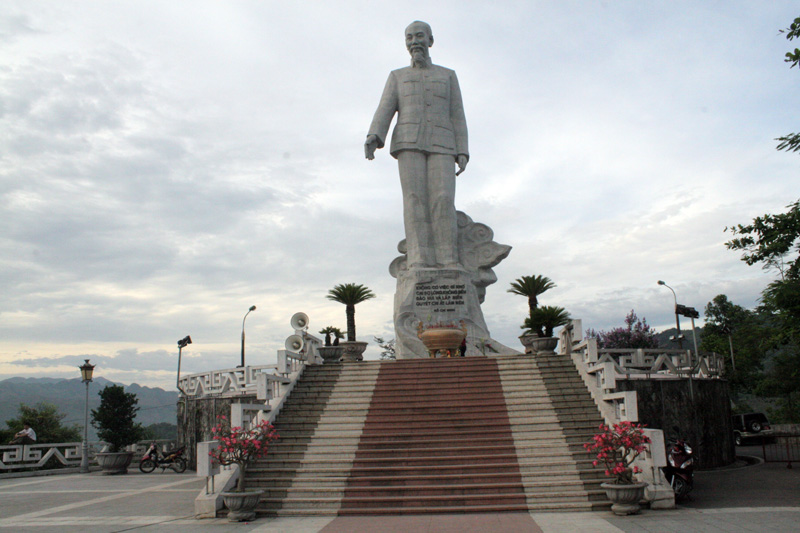


Standing atop Tuong hill which is nearly 180m from sea water level, the monument seems to have witnessed national construction achievements made by provincial officials and people. At the monument site, one could see the panorama of the hydropower plant with the vast bed of Hoa Binh reservoir and the Da river which is running gently as a silk strip flowing downstream.
Construction of the monument was completed on
January 8, 1997 – one year since its groundbreaking ceremony. It was
inaugurated on the day marking the 67th founding anniversary of the Communist
Party of Vietnam. It is as high as 18m, featuring the 13.5-m-tall body of the
statute and the 4.5m high pedestal. The statue weighs nearly 400 tonnes, made
of ultra-high and granite concrete made by the Institute of Building
Materials.

Photo caption: Uncle Ho monument is an
architectural landmark on Hoa Binh hydropower plant, attracting numerous
tourists coming for incense-offering and sightseeing.
The hill is called Tuong (elephant) as it looks
like a prostrate giant elephant that uses its trunk to get water from the Da
river. There are 79 rungs of ladder symbolising 79 springs throughout of the
life of the beloved leader of the nation who dedicated his life to national
liberation, independence of the country, and happiness and prosperity of
people.
The Uncle Ho Monument was designed by sculptor
Nguyen Vu An – a lecturer of the Hanoi Architectural University. The
architecture of the monument complex was commissioned by Russian architect
Serebriansk. The monument meets requirements of fine arts, landscape,
architectural and cultural values of humanity.
The idea of building Uncle Ho's monument on Hoa
Binh hydropower plant came up after Uncle Ho visited the Party Committee and
people of different ethnic groups in the province, during which he called on
the Socialist Working Youth school in Yen Mong commune, Hoa Binh city. His
visit came in the flooding season so that local people made a large raft to
take him across the river. Standing on the raft, he pointed down the river and
said: "After the country is united, we have to conquer this river to prevent
floods and serve the interest of the people”. For such reason, the image of
Uncle Ho pointing his finger down to the river is expressed in the work.
Thanks to the Soviet Union’s support, the whole
country has overcome difficulties to conquer ferocious Da river and build Hoa
Binh hydropower plant to convert boundless water resources into abundant power
source serving national development./.